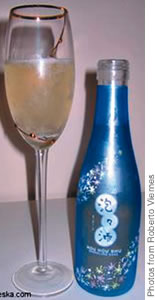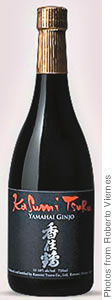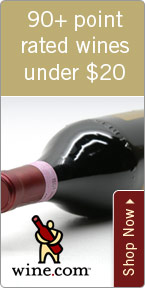Going Wild With Food-friendly Sake

Wednesday - December 10, 2008
| Share
 Del.icio.us
Del.icio.us
|
One of the things I am having tremendous fun learning about and exploring is sake and food pairing. Sake is not a new thing, but has become more popular in the U.S. in the past decade with a huge move by sommeliers to find the great “boutique” and family breweries and their limited and very fine sake.
In my quest for knowledge, I spoke to two leading experts in the world of sake to learn even more. Chris Pearce is the managing partner for World Sake Imports, one of the leading lights and pioneers in the sake industry. Tamiko Ishidate is director of sales, western division, for Joto Sake, one of the U.S.‘s finest importers of small “family owned” breweries.
One thing I found interesting about sake and food pairing is that it is basically a new phenomenon. Traditionally, in Japan, having a specific sake with each course or dish did not exist. Families enjoyed a single sake the entirety of the meal. Only with the coming of European/American dining has sake taken on some of the same aspects of wine in restaurants around the world. That being said, sake is much more than just a pairing with Japanese/Asian food. It has a tremendously wide application.
For basics, I asked if sake had a parallel generality to wine as far as pairing types of sake with types of food. I referred to the general brush stroke of “red wine with meat and white wine with fish.”
Pearce distilled it down for me as “Junmai with meat, Ginjo with sashimi, while Daiginjo stands alone.”

|
Junmai (sake made from rice milled down to 70 percent or less of its original size) has more robust flavors and texture, so it stands up to more formidable proteins such as beef, pork and even lamb or venison.
Ginjo (sake made from rice milled down to 60 percent or less) is more refined with complex flavors and more nuances. Ishidate agrees that this style finds itself a greater pair with the lighter flavors and softness of fish, especially of the raw persuasion.
Daiginjo (sake made from rice milled down to 50 percent or less) is like an aged Grand Cru or First Growth Bordeaux in terms of complexity and ineffable flavors. Here you must choose wisely what to eat with it so as not to overshadow or impede the full experience of this amazing beverage. I would avoid overly spicy or powerful flavors. Ishidate mentions that Daiginjo is the most complex and refined, offering an amazing palate of flavors, but even more elegant complexity without being overbearing or heavy. Pearce says “it is great enough to stand alone.”
Eager to find out some of the more esoteric and outlandish pairings they have experienced, I had to ask if they had some really “wild” food pairings with sake. I’d heard of people pairing sake with Mexican and Indian cuisine, but with Italian? Ishidate said that the Katsumi Tsuru Yamahai Ginjo ($39) with its smoky, earthy flavors and just off-dry tone goes great with a simple pasta done with olive oil, garlic, basil and tomato sauce.
Pearce will be featuring a host of sake pairings at the Kahala Resort Wine and Food Festival Dec. 12-14, from traditional to innovative. But the one he shared with me that I must try is the chocolate dessert with Masumi ‘Arabashiri’($30), freshly pressed sake with a hefty 18 percent alcohol weight and medium dryness.
It is the so-called “zinfandel of sake” with huge and intense flavors and aromas that are a necessity when pairing with chocolate. Ishidate also piqued my interest with a pairing of Hou Hou Shu ($9/180ml) Sparkling Sake with a breakfast omelet filled all the fixings - crème fraiche, chives and red onions. It acts quite like a mimosa with a hint of sweetness and the effervescence of a sparkling wine. It sounds like a winner to me.
As you can see, sake is absolutely food friendly. Unlike wine, it has no sulfites and much less acidity if that concerns you. Sake isn’t just for sushi anymore. I’d love to hear about your “wild” sake pairings.
Roberto Viernes is a master sommelier. E-mail .(JavaScript must be enabled to view this email address)E-mail this story | Print this page | Comments (0) | Archive | RSS Comments (0) |
Most Recent Comment(s):












